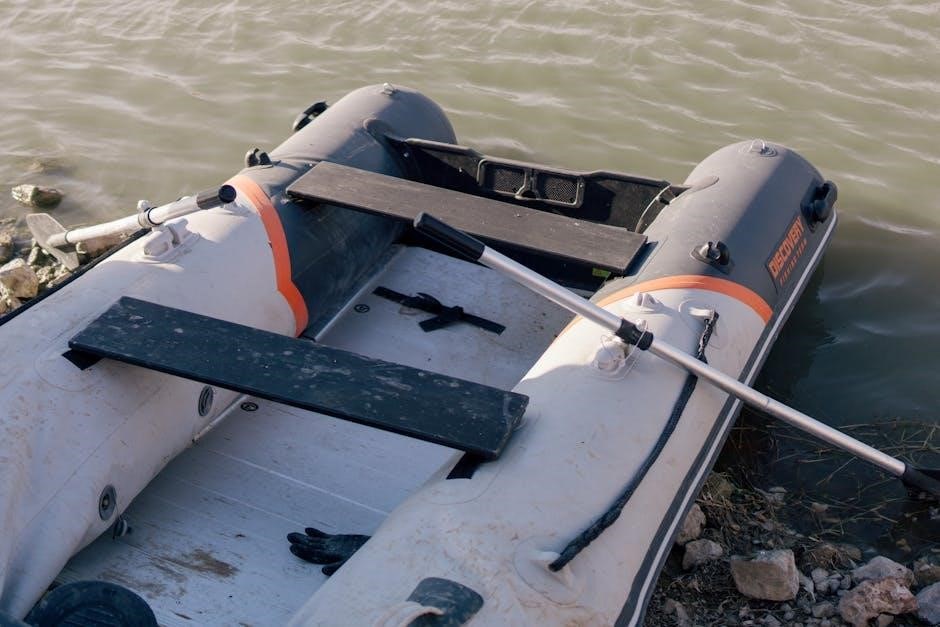Paddle shifters offer a balance between automatic ease and manual control, allowing drivers to change gears without a clutch pedal, enhancing convenience in traffic while maintaining driver engagement.
Definition and Basic Functionality
Paddle shifters are manual overrides on automatic transmissions, allowing drivers to control gear changes via steering wheel-mounted paddles. They combine the convenience of an automatic with the driver engagement of a manual, eliminating the need for a clutch pedal. This system enables quick, manual-like gear shifts without sacrificing the ease of automatic driving, making it ideal for both daily commuting and performance driving scenarios.
History and Evolution

Paddle shifters emerged in the late 20th century, initially in high-performance cars. They evolved from early semi-automatic systems, integrating electronic controls for smoother shifts. By the 2000s, paddle shifters became common in luxury and sports vehicles, offering precise control. Modern systems now feature advanced electronics, faster shift times, and seamless integration with sport modes, enhancing both performance and convenience. This evolution reflects the automotive industry’s shift toward combining manual driving engagement with automatic ease.
How Paddle Shifters Work
Paddle shifters operate by allowing drivers to manually change gears using electronic controls. Mounted on the steering wheel, they send signals to an electronic control unit, which actuates gear shifts. Unlike manual transmissions, paddle shifters eliminate the need for a clutch pedal, enabling hands-free shifting. This system integrates seamlessly with automatic transmissions, providing a hybrid of convenience and control. Drivers can upshift or downshift using the paddles, with the car automatically adjusting engine speed for smooth transitions. This setup combines the ease of automatics with the engagement of manual shifting.
Manual transmissions offer precise control via a clutch pedal and gearshift, enabling drivers to manage acceleration and fuel efficiency effectively while providing a more engaging driving experience.
Paddle shifters are electronic or mechanical controls mounted on the steering wheel, allowing drivers to manually change gears in an automatic or dual-clutch transmission. Unlike manual transmissions, which require a clutch pedal and gearshift, paddle shifters enable gear changes with simple finger movements, providing a hybrid of convenience and control. They are typically paired with automatic systems, offering a sporty feel without the complexity of a traditional manual gearbox. This setup allows for seamless shifting during driving, making it ideal for both performance and everyday use.
Paddle shifters emerged in the late 20th century, initially in high-performance cars. They evolved from early semi-automatic systems, integrating electronic controls for faster, more precise shifting. The 1980s saw their debut in Formula 1, influencing road cars. By the 2000s, paddle shifters became mainstream, offering a blend of automatic convenience and manual-like control. Modern systems now feature advanced electronics, enabling rapid shifts and adaptive driving modes, making them a staple in both luxury and performance vehicles. This evolution reflects the automotive industry’s shift toward blending convenience with driver engagement.
How Manual Transmissions Work
A manual transmission requires the driver to manually change gears using a clutch pedal and a gearshift. The clutch disconnects the engine from the transmission, allowing the driver to shift gears without grinding. The gearshift is operated by hand, selecting the desired gear based on speed and driving conditions. The system relies on mechanical linkages and synchromesh technology to synchronize gear changes, providing a direct, tactile connection to the vehicle. This hands-on process offers a sense of control and engagement, making it a preferred choice for driving enthusiasts.

Comparison of Ease of Use
Paddle shifters simplify gear changes with minimal effort, ideal for traffic, while manual transmissions require more skill and physical engagement, offering greater control and driver involvement.
Ease of Use in Congested Traffic
Paddle shifters excel in congested traffic due to their simplicity, requiring only paddle inputs without clutch operation, reducing driver fatigue. Manuals demand constant gear shifts and clutch engagement, which can be tiring in stop-and-go conditions. Paddle shifters allow drivers to keep both hands on the wheel, enhancing control and safety in tight traffic scenarios. This convenience makes paddle shifters more appealing for city driving, while manuals offer a more engaging experience but require more skill and effort in heavy traffic situations.
Convenience for New Drivers
Paddle shifters are ideal for new drivers as they eliminate the need to master clutch and gear coordination, reducing the learning curve. This simplicity allows novice drivers to focus on steering and braking, enhancing safety and confidence. Manuals require precise timing and coordination, which can be challenging for inexperienced drivers. Paddle shifters provide an intuitive interface, making them more accessible and less intimidating for those new to driving, while still offering a degree of control over gear changes.
Hand-Free Shifting with Paddle Shifters
Paddle shifters offer the advantage of keeping both hands on the steering wheel, allowing for seamless gear changes without needing to move a hand from the wheel. This design enhances control and stability, especially during sharp turns or high-speed maneuvers. In contrast, manual transmissions require drivers to juggle steering and shifting, which can be less convenient. Paddle shifters provide a more streamlined driving experience, keeping the driver fully engaged with the road and reducing distractions.
Manual Shifting and Driver Engagement
Manual shifting offers a unique driving experience, requiring active participation with the clutch and gearshift, which many find rewarding and immersive. Drivers can feel more connected to the vehicle, as they directly control gear changes. This tactile interaction enhances engagement, especially in performance or track scenarios, where precise control is valued. For enthusiasts, the manual transmission’s demand for skill and attention creates a deeper bond with the car, making driving a more enjoyable and interactive endeavor.

Performance Comparison
Paddle shifters offer faster shift times and responsiveness, ideal for racing, while manual transmissions provide better control for precise handling and driver input.
Shift Speed and Responsiveness
Paddle shifters deliver faster shift times compared to manual transmissions, leveraging automated systems for quick gear changes. This makes them ideal for performance driving, such as drag racing or track scenarios. Modern paddle shifters often outperform manual gearboxes in terms of speed and precision, reducing human error. However, manual transmissions provide a more direct mechanical connection, offering a sense of control and responsiveness that some drivers prefer. Ultimately, paddle shifters excel in rapid, consistent shifting, while manuals cater to those seeking a tactile driving experience.
Control Over Gears in Different Driving Scenarios
Paddle shifters provide seamless gear control without manual intervention, ideal for dynamic driving scenarios like uphill climbs or sharp turns. They allow drivers to focus on steering while maintaining control. Manual transmissions, however, offer precise gear selection, especially in off-road or towing situations, where mechanical feedback is crucial. Paddle shifters excel in urban and high-speed environments, while manuals shine in low-speed, high-torque conditions, catering to different driving needs and preferences.

Acceleration and Drag Racing Performance
Paddle shifters excel in acceleration and drag racing due to their rapid, seamless gear changes, reducing time lost during shifts. This consistency is advantageous in competitive environments. Manual transmissions, while slower in shifting, offer direct driver engagement and control, appealing to purists. Paddle shifters’ speed and ease make them ideal for performance driving, while manuals provide a tactile experience. The choice hinges on prioritizing outright speed or the joy of mechanical interaction.
Handling and Precision on the Track
Paddle shifters provide quick gear changes, enabling precise control during sharp turns and high-speed maneuvers on the track. Their instant responses allow drivers to maintain focus on steering. Manual transmissions offer a direct mechanical connection, giving drivers tactile feedback and control. However, paddle shifters reduce distraction by keeping hands on the wheel, enhancing consistency. Manuals, while engaging, require more skill and attention. Both options excel, but paddle shifters often edge out in track precision due to their speed and accessibility.

Cost and Maintenance

Paddle shifters typically have higher initial and maintenance costs due to complex electronics. Manuals are generally more affordable and require less specialized repair expertise, ensuring lower long-term expenses.
Initial Purchase Cost
Manual transmissions are generally more affordable during initial purchase compared to paddle shifters. Vehicles equipped with paddle shifters often come with higher price tags due to their advanced technology and electronic components. However, the cost difference can vary depending on the vehicle make and model. Additionally, luxury cars with paddle shifters may offer more features, justifying their higher cost. Drivers on a budget often opt for manuals, while those prioritizing convenience and performance may choose paddle-equipped vehicles despite the added expense.
Maintenance and Repair Expenses
Manual transmissions typically have lower maintenance and repair costs compared to paddle shifters. Manuals are simpler, with fewer electronic components, reducing the likelihood of costly repairs. Paddle shifters, being part of automated systems, involve more complex technology, leading to higher maintenance expenses. However, manuals may require clutch replacements over time, which can be a significant cost. Overall, manual transmissions are more economical in the long run, while paddle shifters may incur higher repair bills due to their advanced systems and electronic parts.
Reliability of Paddle Shifters
Paddle shifters are generally reliable but can be less durable than manual transmissions due to their complex electronic components. While they offer modern convenience, issues like sensor malfunctions or software glitches can arise. Manuals, with fewer parts, tend to be more dependable long-term. However, paddle shifters are continually improving with technological advancements, enhancing their overall reliability in modern vehicles.
Durability of Manual Transmissions
Manual transmissions are known for their robust simplicity, making them highly durable and long-lasting with minimal electronic components. Unlike paddle shifters, manuals have fewer parts prone to failure, offering reliability over time. They withstand rigorous driving conditions and require less maintenance, appealing to drivers seeking a dependable option. This durability makes manual transmissions a preferred choice for those prioritizing longevity and mechanical simplicity in their vehicles.
Driving Experience
Driving with paddle shifters offers a blend of convenience and sporty feel, while manual transmissions provide tactile engagement, making each drive more immersive and connected to the road.
Engagement and Fun Factor
Paddle shifters deliver a sporty feel with quick, precise gear changes, ideal for track driving, while manual transmissions offer tactile engagement and a sense of control, appealing to driving purists.
Convenience in Daily Driving

Paddle shifters provide effortless gear changes without a clutch pedal, making city driving and traffic jams less stressful. They allow drivers to keep both hands on the wheel, enhancing control and comfort. In contrast, manual transmissions require constant clutch and gear engagement, which can be tiring in heavy traffic. Paddle shifters offer a practical balance between convenience and driver involvement, making them ideal for daily commuting. They simplify low-speed maneuvers, such as parking or crawling in traffic, while maintaining the option for sporty driving when desired;
Focus on Driving Dynamics
Paddle shifters enhance driving dynamics by allowing precise gear control without distractions, enabling drivers to focus on steering and acceleration. They eliminate the need for manual clutch operation, reducing driver workload during dynamic maneuvers. This setup is particularly beneficial on winding roads or tracks, where quick shifts and consistent power delivery are crucial; While manual transmissions offer a direct mechanical connection, paddle shifters streamline the process, making it easier to maintain optimal performance and control, especially in high-intensity driving scenarios.
Manual Shifting and Driver Involvement
Manual transmissions create a deeper connection between the driver and the vehicle, requiring active engagement with the clutch and gearshift. This mechanical interaction enhances the driving experience, offering a sense of control and satisfaction. The tactile feedback of shifting gears manually fosters a more immersive and enjoyable drive, particularly for enthusiasts who value the art of driving. In contrast, paddle shifters, while efficient, can feel less engaging, as they rely on electronic systems rather than direct mechanical input from the driver.

Practicality and Convenience
Paddle shifters offer unmatched convenience, especially in traffic, allowing hands to remain on the wheel. Manuals demand more driver effort, making paddle shifters more practical for daily use.
City Driving and Traffic
Paddle shifters excel in city driving by eliminating the need for constant clutch and gear changes, reducing driver fatigue. Manuals require frequent shifting, which can be tiring in heavy traffic, while paddle shifters allow hands to stay on the wheel, enhancing control. This convenience makes paddle shifters ideal for urban environments, where stop-and-go traffic is common. Manuals, while engaging, demand more effort, making paddle shifters a practical choice for daily commuting in congested areas.
Long-Distance Cruising
For long-distance cruising, paddle shifters provide a more relaxed driving experience by minimizing the need for frequent manual gear changes. This reduces driver fatigue on extended trips. Manuals, while offering more control, require constant engagement, which can be tiring over long distances. Paddle shifters allow drivers to enjoy a smoother ride, especially on highways, where consistent speeds are maintained. The ease of use makes paddle shifters a preferred choice for comfort during lengthy journeys, optimizing both convenience and driving comfort.
Parking and Low-Speed Maneuvering
Paddle shifters simplify low-speed maneuvers like parking by eliminating the need for manual clutch operation, reducing complexity. This makes navigating tight spaces easier and less stressful. Manual transmissions require precise clutch and gear coordination, which can be challenging in confined areas. Paddle shifters provide smoother transitions and allow drivers to focus on their surroundings without the hassle of constant gear changes, making them more convenient for low-speed driving scenarios compared to manual transmissions.
Accessibility for Different Driver Skill Levels
Paddle shifters accommodate a broader range of driving skills, making them more accessible to new or less experienced drivers. They eliminate the need for manual clutch coordination, simplifying the learning process. Manual transmissions, while rewarding for skilled drivers, require practice and coordination, which can be intimidating for novices. Paddle shifters offer a middle ground, providing ease of use while still allowing for driver engagement. This makes them a versatile option for drivers of varying skill levels, catering to both convenience and control.
Technological Advancements
Modern paddle shifters integrate seamlessly with advanced systems, offering faster shift times and sport modes, while manuals rely on mechanical simplicity, making paddle shifters more tech-savvy.
Modern Paddle Shifter Systems
Modern paddle shifter systems combine electronic precision with intuitive design, enabling rapid gear changes without manual clutch engagement. These systems often integrate with adaptive algorithms to optimize shifting based on driving conditions, offering sport modes for enhanced performance. They feature ergonomic paddle placement, ensuring easy access and minimal driver distraction. Additionally, modern systems may include features like rev-matching and predictive shifting, further enhancing both efficiency and driving enjoyment.
Integration with Sport Modes
Modern paddle shifters seamlessly integrate with sport modes, enhancing performance by sharpening throttle response and quickening gear transitions. This mode often holds gears longer, allowing higher RPMs for maximum acceleration. The system adapts to aggressive driving, delivering precise control and faster shifts. Sport mode prioritizes driver input, making paddle shifts more responsive. This integration creates a dynamic driving experience, balancing automation with manual-like control, ideal for both track and spirited road driving. The result is a more engaging and exhilarating ride compared to traditional automatics.
Electronic Aids and Driver Assistants
Modern paddle shifter systems often incorporate advanced electronic aids, such as adaptive shift logic and traction control, to optimize gear changes and stability. These systems automatically adjust shifting patterns based on driving conditions, ensuring smooth acceleration and cornering. Additionally, features like rev-matching and downshift blipping enhance performance without manual intervention. In contrast, manual transmissions rely more on driver skill and input, with fewer electronic aids. This integration of technology in paddle shifters provides a more assisted and efficient driving experience compared to traditional manuals.
Future Trends in Transmission Technology
Future transmission technology is expected to blend paddle shifters with advanced automation, offering next-generation hybrid systems. AI-driven predictive shifting and seamless integration with electric powertrains will dominate. Paddle shifters may evolve into intuitive, adaptive controls, enhancing both performance and efficiency. Manual transmissions could see niche applications, while automatics with paddle overrides become the norm. These advancements aim to deliver faster, smarter, and more sustainable solutions, catering to both performance enthusiasts and eco-conscious drivers in an increasingly electrified automotive landscape.
Driver Preference and Use Cases
Driver preferences vary widely, with paddle shifters appealing to those prioritizing convenience and track performance, while manuals attract purists seeking a tactile driving experience.
Track and Performance Driving
In track and performance driving, paddle shifters excel by enabling rapid gear changes without taking hands off the wheel, reducing distraction and improving lap times. Modern paddle systems often outpace manual transmissions in speed and consistency, making them ideal for competitive environments. However, manuals offer precise control and a mechanical connection, appealing to purists who value driver involvement. The choice between paddle shifters and manuals for track use ultimately depends on prioritizing speed and convenience or maintaining a direct, tactile driving experience.
Daily Commuting and City Use
Paddle shifters shine in daily commuting and city driving by offering effortless gear changes without needing a clutch pedal, reducing driver fatigue in heavy traffic. Their ease of use allows drivers to focus on navigation and road conditions, making urban driving less stressful. Manual transmissions, while less convenient in stop-and-go traffic, provide better fuel efficiency and cost-effectiveness for city use. The choice depends on prioritizing convenience and ease or seeking a more economical, reliable option for daily driving needs.
Off-Road and Towing Scenarios
In off-road and towing scenarios, manual transmissions often outperform paddle shifters due to their mechanical simplicity and ability to maintain control at low speeds; Manual gearboxes provide precise torque delivery, essential for navigating rough terrain or hauling heavy loads; Paddle shifters, while convenient, may lack the durability and reliability needed for extreme conditions, as their electronic components can be vulnerable to stress. For serious off-road or towing needs, a manual transmission remains the more robust and dependable choice.
Personal Preference and Driving Style
Personal preference and driving style play a significant role in choosing between paddle shifters and manual transmissions. Drivers who value convenience and ease of use often prefer paddle shifters, as they allow hands to stay on the wheel and reduce physical effort. Conversely, enthusiasts who enjoy the tactile experience of shifting gears and connecting with the vehicle tend to favor manual transmissions. This choice often reflects a driver’s personality, with paddle shifters appealing to those seeking modern convenience and manuals attracting purists who cherish traditional driving engagement.
The choice between paddle shifters and manual transmissions ultimately depends on personal preference, driving style, and specific needs, balancing convenience, performance, and driver engagement.
Final Thoughts on Paddle Shifters
Paddle shifters offer a compelling blend of convenience and control, making them ideal for drivers who value ease of use without sacrificing performance. They excel in traffic, allowing hands-free shifting and quick responses, while their integration with modern technology enhances driving dynamics. For everyday commuting or track enthusiasts, paddle shifters provide a versatile option that balances practicality and fun, catering to a wide range of preferences and driving scenarios.
Final Thoughts on Manual Transmissions
Manual transmissions remain a beloved choice for driving purists, offering unmatched engagement and control. They provide a direct connection to the vehicle, enhancing the joy of driving, especially on winding roads or tracks. With fewer electronic components, manuals are often more reliable and durable, appealing to enthusiasts who value precision and mechanical simplicity. However, their demand for skill and attention makes them less practical in heavy traffic, limiting their appeal for everyday commuters seeking convenience.

Recommendation Based on Driving Needs
Choose paddle shifters for convenience and ease, ideal for city driving and traffic, while manual transmissions suit enthusiasts seeking control and engagement. For performance, paddle shifters offer faster shifts, while manuals provide a tactile driving experience. Assess your priorities: daily commuting benefits from paddles, while track driving may favor manuals. Ultimately, the choice depends on whether you value ease, speed, or the joy of mechanical connection, ensuring the right fit for your lifestyle and driving preferences.
